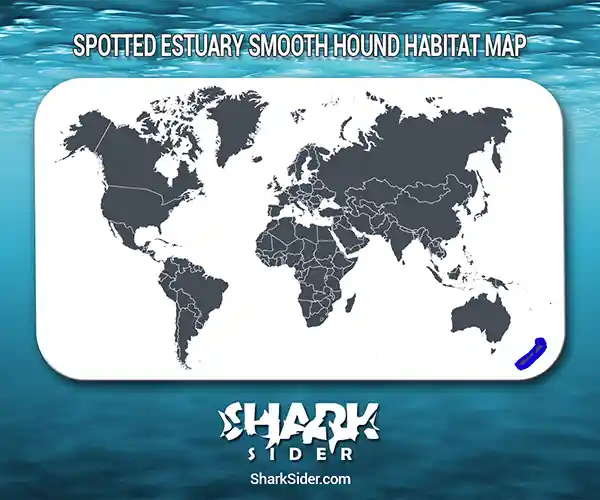The Spotted Estuary smooth-hound, also known as rig or lemonfish, is a houndshark native to New Zealand. It is a close relative of the Gummy shark of Australia and the only shark from its genus found within its habitat range.
Spotted Estuary Smooth-Hound Scientific Classification |
|
| Kingdom | Animalia |
| Phylum | Chordata |
| Class | Chondrichthyes |
| Order | Carcharhiniformes |
| Family | Triakidae |
| Genus | Mustelus |
| Scientific name | M. lenticulatus |
Description
Adult males grow up to 78-89 cm (2.5-2.9 ft), and females reach 79-113 cm (2.6-3.7 ft). The longest recorded specimens measure 126 cm (4 ft) for males and 151 cm (5 ft) for females.
It has a grey-brown body with white spots and a lighter lower half. Their eyes are relatively large and widely spaced along with the nostrils. Its mouth has long furrows on its upper labia and is lined with blunt teeth. It has comparatively larger pectoral and pelvic fins, and the dorsal fins lack fraying at the edges.
Where do they live
Map Of The Spotted Estuary Smooth-Hound Shark’s Habitat

These bottom-dwelling sharks are endemic to five breeding stocks on the continental shelves and estuaries of the New Zealand coastline. They inhabit the cooler, temperate waters at depths of 0-860 m (2,821 ft). They are most common at 400 m (1,312 ft) but migrate deeper in the winter.
Behavior
Dietary
Their primary diet is crustaceans, especially crabs.
Reproductive
The females are ovoviviparous, having litters of 2-37 pups annually, with a gestation period of around 11 months. The newborns measure 20-32 cm (7.8-12 in), and the size of the litter varies with the size of the female. These fast-growing fish mature at 5-8 years and live up to 15 years.
Social
This species is known for schooling and making seasonal migrations. These schools are separated by size and sex, with the immature schools removed from the larger, same-sex ones. They migrate inshore during the summer to feed and mate, with females moving greater distances than males.
Adaptations
They share many features with other sharks, such as a keen sense of smell and sight, streamlined bodies, and sharp teeth for cutting.
Human interactions
It is an important commercial fish, usually served as ‘lemon fish” in New Zealand’s fish and chips joints. Their population is stable, and the New Zealand Department of Conservation assessed the shark as “Not Threatened” in June 2018, with the modifier “Conservation Dependent.” Additionally, the IUCN has listed them as “Least Concern” or “LC.”
